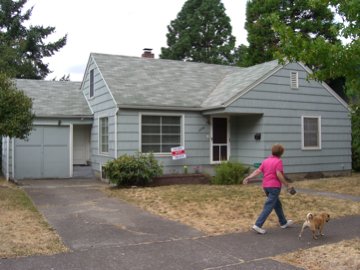Saturday I drove up to Napa to spend the night at my friend Pete‘s house. The idea was to get up there so that we could get an early start for this morning’s Tour of Napa Valley, an annual 100-mile ride up and down the valley and in the hills to the east and west. We hit the road with Pete’s friend and wine-industry colleague Peter Marx at just after 6:30 a.m. Pete’s half-serious goal was to finish the ride in six hours, which is a little faster than I’ve ever done a century.
The route starts with about 10 miles of perfectly flat valley-floor road for a warmup — a warmup needed especially this morning because it was foggy and chilly. Then it heads up Mount Veeder, a long gradual climb (about 1,300 feet in all) that gets steep in the last mile and a half or so. That’s followed by a short descent, short climb, then a long, steep, twisting, technical descent, another very short rise, then a long, straightforward downhill run back into Napa. After that, you cross the valley and head up one of the two main north-south routes, Silverado Trail (the other is Highway 29). It’s a flat to slightly rolling ten miles, followed by a short, gradual climb on Highway 128 up to a small reservoir (Lake Hennessey), then a longer but also gentle uphill along one of the creek’s that flows into the lake. The lunch stop was at mile 66 in Pope Valley, a still pretty remote ranching and wine-growing area; after that, there’s a moderate four-mile climb up a road called Ink Grade (rule of thumb: anything with “grade” in its name means you’re going to work), and after that two or three miles of hilltop rollers before a long, very fast descent back toward the valley. Eventually, you wind up back on Silverado Trail, southbound this time, and it takes you nearly all the way back to the start.
Did we make it in six hours? Not quite. There was just enough hill-climbing to keep the linebacker types, like me, from going real fast. I descend like a safe coming down the road on casters — very elegant. But my advantage comes on long, flat stretches where I can just get out and motor; I’ve gotten pretty good at maintaining a pace — not racing speed; more like taking-care-of-business speed. We all worked pretty hard all day and made it in just over six and a half hours. Bottom line: We were still having fun at the end.
Tonight? Tired, and hungry, too.
Technorati Tags: california, cycling



